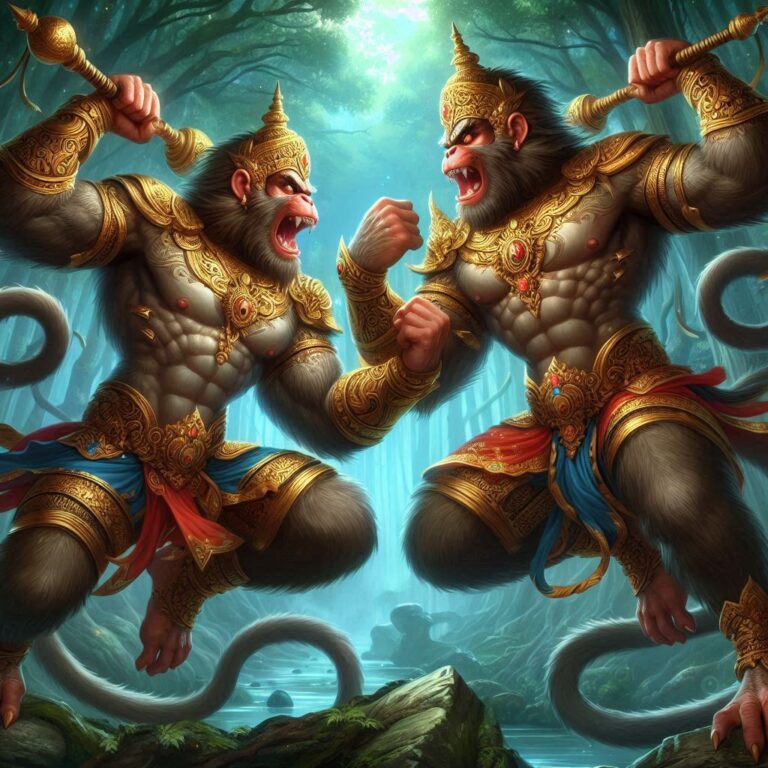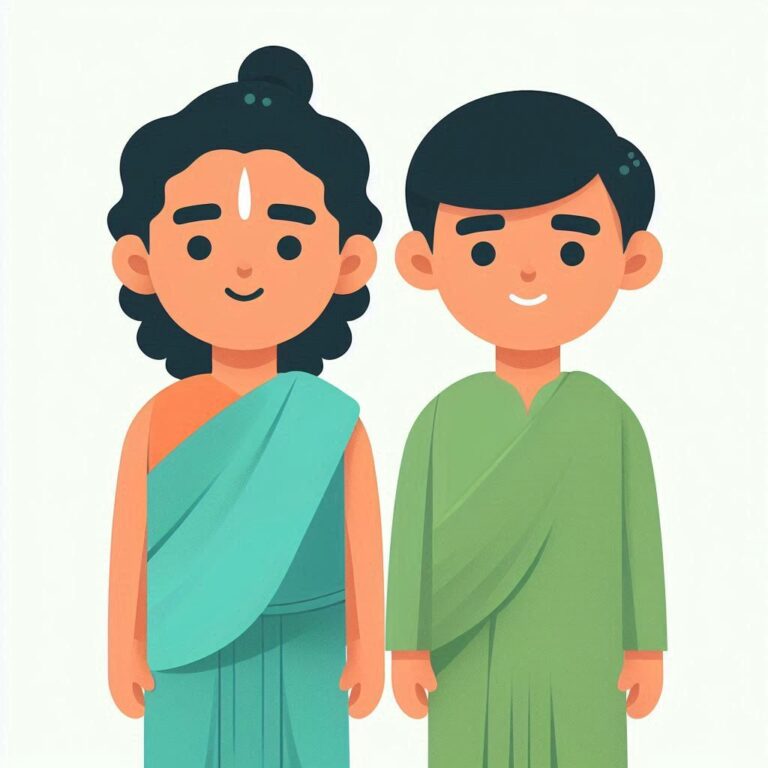Sita and Lakshmana’s Loyal Journey Alongside Rama
Sita and Lakshmana: Their Unwavering Loyalty
The epic tale of Ramayana is a complex narrative filled with love, duty, sacrifice, and loyalty. One of its most poignant stories revolves around the characters of Sita and Lakshmana, who choose to accompany Lord Rama during his exile. What drives these two remarkable figures to leave behind their ordinary lives for a journey into the wilderness? Let’s unravel this beautiful tale of devotion and commitment.
Setting the Scene: The Royal Family of Ayodhya
Before diving into the pivotal moments of Sita and Lakshmana’s departure with Rama, let’s get a glimpse of their lives in Ayodhya. Known for its grandeur, Ayodhya was not only the capital of the Ikshvaku dynasty but also the embodiment of peace and prosperity. The royal family, headed by King Dasharatha, enjoyed a life of luxury and respect.
A Family Bond Like No Other
At the heart of Ayodhya’s peace was the bond between Rama, Sita, and Lakshmana. Rama, the eldest son, was known for his virtues, gallantry, and righteousness. Sita, his devoted wife, exemplified purity and strength, while Lakshmana, his younger brother, stood as a paragon of loyalty and bravery. Their relationships weren’t just familial; they were built on mutual respect, love, and an unwavering commitment to upholding dharma (duty/righteousness).
The Call to Adventure: Exile Begins
The tranquility of Ayodhya was shattered by the unexpected decree of King Dasharatha, influenced by the cunning of Queen Kaikeyi. Rama was to be exiled to the forest for fourteen years to fulfill his father’s promise to Kaikeyi. For most, such a turn of events would evoke despair, but for Sita and Lakshmana, it sparked an adventurous spirit.
Sita’s Unyielding Resolve
Imagine being in Sita’s shoes—or sandals, if you will. Here is a woman of royal lineage, abruptly asked to abandon her comfortable life. However, her love for Rama wasn’t tied to palaces and pleasures. Instead, she saw exile as an opportunity to prove her undying commitment.
The essence of her character can be mirrored in the following श्लोक (Shloka):
श्लोक:
सौम्यं श्रुति न यश्चित्तं में नाश्यति यदाधिनोत्तः।
प्रवृत्तः सदा त्वदन्यः संतोषयति धर्मतः॥
Phonetics: Saumyaṁ śruti na yaścittaṁ meṁ nāśyati yadādhino’t tahāṁ।
Translation: Your essence remains engraved in my heart; even in suffering, my spirit is lifted by the thought of you.
Lakshmana’s Devotion
Now let’s shift our focus to Lakshmana. Often perceived as a loyal shadow to Rama, his decision to accompany the brothers during exile can be interpreted in multiple layers. For him, loyalty went beyond just duty; it was a profound emotional bond. He viewed Rama’s suffering as his own, encapsulated beautifully in the दोहा (Doha):
दोहा:
राघव सिव कुशल नहिया, मोहि सुमिरन सदा।
भले आपुपास कियों, साथ राम न जइ पा॥
Phonetics: Rāghava siva kuśala nahiyā, mohi sumirana sadā।
Translation: Remembering Rama is my solace; leaving him would be akin to losing my very essence.
The Decision to Depart: A Turning Point
The day of departure arrives, with emotions running high. King Dasharatha’s sorrow was palpable, and yet, Sita and Lakshmana’s resolution sparkled like a beacon amidst the clouds of despair.
Sita’s Speech: The Declaration of Strength
As the family gathered for what would essentially be a farewell, Sita boldly stood up and announced her commitment to join Rama. A significant moment loaded with emotional depth! Her voice echoed with nurturing strength, reminiscent of the श्लोक:
श्लोक:
नृशंसः सुमित्रा यदि रामेन सह चेष्टते।
उषा दंष्ट्रानि जित्वा, लक्ष्मण व्रतमविधाय॥
Phonetics: Nṛśaṁsaḥ sumitrā yadi rāmen saha ceṣṭate।
Translation: In times of tribulation, I stand not just as his wife but as his equal.
Lakshmana’s Promise
When Rama saw Sita’s steadfastness, he could scarcely contain his emotions. Lakshmana, watching the scene unfold, vowed to protect them both through thick and thin, rendering his loyalty clear:
दोहा:
भैया तुहि न छोड़ियत, सुख दुख एक सम जइ।
यहां देह नहीं बड़बड़, अस त संतोष मन तइ॥
Phonetics: Bhaiyā tuhi na choḍiyat, sukha dukha eka sama jai।
Translation: I will not abandon you, my brother. In joy and in sorrow, we journey together.
The Journey into the Unknown
As the trio set forth on the treacherous path into the forest, they symbolized the ultimate bond of loyalty, love, and dharma. The shifting landscape around them mirrored their internal journeys—challenges that would bring out the best or the worst in them.
Encounters with Nature: The Wilderness Beckons
The forest, shrouded in mystery, laid ahead, filled with both beauty and danger. From the breathtaking beauty of blooming flowers to the ominous presence of lurking predators, it was truly an uncharted territory. But what caught their eye was not just the physical wilderness; it was the emotional terrain they were traversing together.
There’s a beautiful श्लोक that resonates with this journey:
श्लोक:
पर्वते हरते किमु स्वर्गं श्रेयस्मरयमेऽपि।
प्रणयपरित्राणं भाति हरिर्यशोऽविभाति॥
Phonetics: Parvate harate kim svargaṁ śreyasmarayame’pi।
Translation: In the mountains, though heaven may be far, the protection of love glimmers brightly.
The Trials Ahead: A Collective Sacrifice
What awaited them in the wilderness were trials—both external threats and inner turmoil. While facing natural disasters and fierce demons, they also confronted their individual vulnerabilities. Sita’s spirit was tested, Lakshmana’s duty was questioned, and Rama’s leadership was challenged. Together, they forged ahead, showcasing the pinnacle of teamwork and synergy.
The Fate of Friendship: Staying United
But it wasn’t just the bond of husband and brother; it was also a tale of friendship. As they faced hardships, Sita and Lakshmana’s companionship blossomed into a recreated form of family, one built upon shared experiences and collective struggles.
Concluding Thoughts: Loyalty That Transcends Time
As we draw the curtains on this exploration, Sita and Lakshmana’s decision to accompany Rama serves as a timeless reminder of love, commitment, and resilience. In an age rife with distractions and superficial ties, their story prompts us to examine our own relationships. Are we able to exhibit such unwavering loyalty to those we hold dear?
Conclusion
Whether it’s the trials faced in a distant wilderness or the tribulations of everyday life, the essence of loyalty endures. Sita and Lakshmana’s journey is not just a historical narrative; it serves as a beacon for generations, urging us to embody the values of compassion, togetherness, and unwavering loyalty. Their story resonates across time, inspiring us to confront our lives with courage and determination.
FAQs:
Q1: What motivated Sita to accompany Rama into exile?
A1: Sita’s deep love and commitment to Rama drove her choice to forsake her royal comforts and accompany him, demonstrating her resolve to share both his joys and struggles.
Q2: How does Lakshmana define loyalty in the context of the Ramayana?
A2: Lakshmana embodies loyalty as steadfast moral support to Rama, willing to face any challenge instead of remaining in the safety of Ayodhya.
Q3: What messages do Sita and Lakshmana’s decisions convey to modern society?
A3: Their choices emphasize the importance of loyalty, integrity, and the strength of relationships, even in the face of adversity.
Q4: How does the wilderness affect the characters’ relationships in the Ramayana?
A4: The forest serves as a backdrop for the characters to confront their true selves, thus deepening their bonds and uncovering their strengths and vulnerabilities.
Q5: Can we see parallels between Sita and Lakshmana’s journey and modern relationships?
A5: Yes, their journey mirrors contemporary relationships where support, commitment, and resilience play crucial roles in overcoming challenges and hardships.








